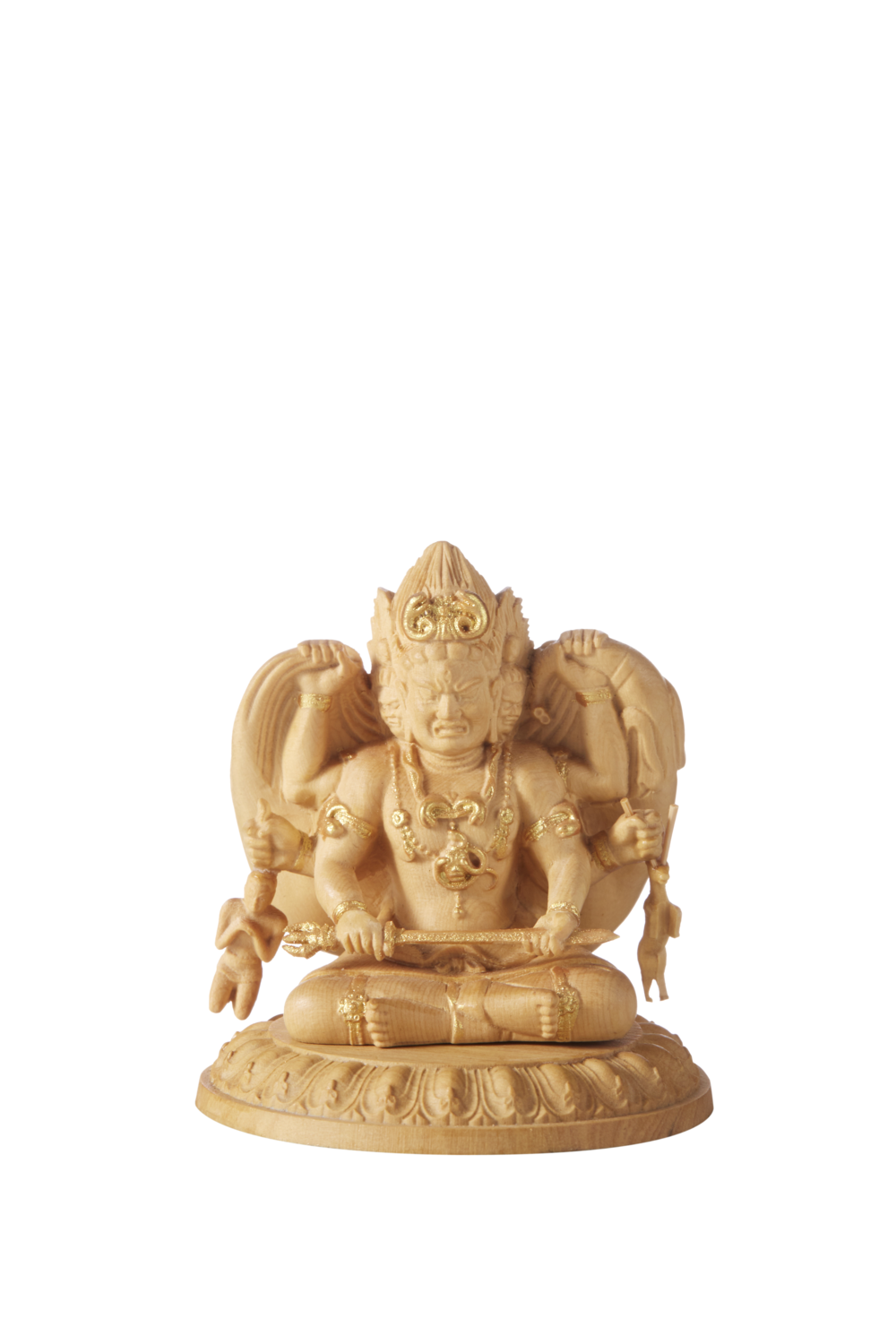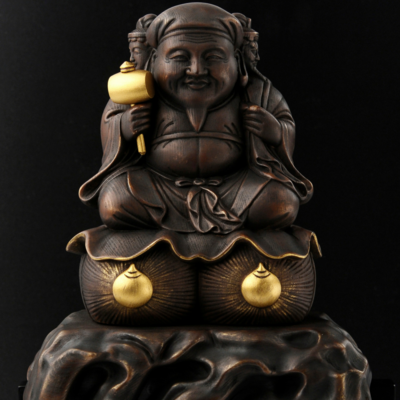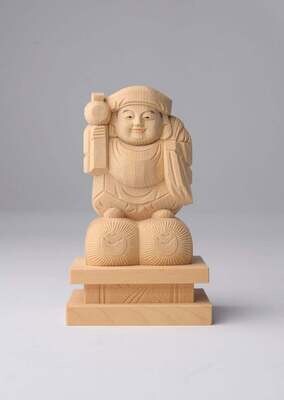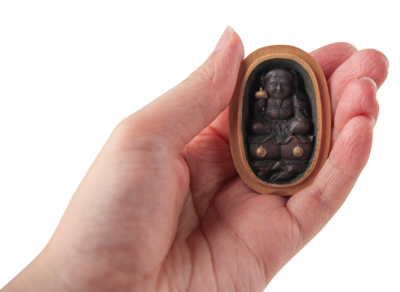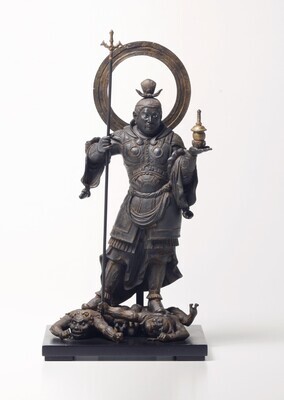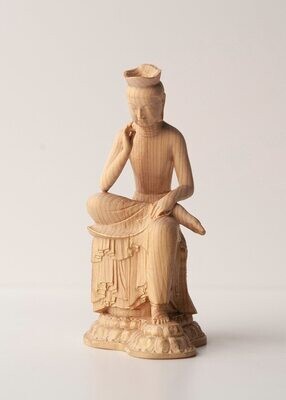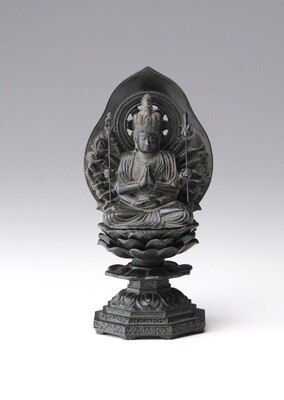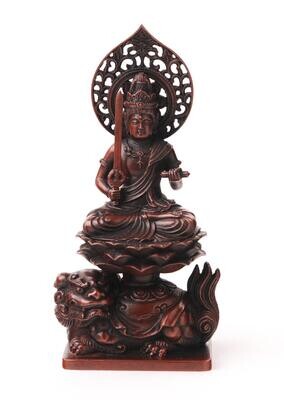Wrathful Sanmen Daikokuten (Three Faced Daikokuten) (忿怒三面大黒天)
In Buddhism, Daikokuten, or Mahākāla, is regarded as the sacred Protector of the Dharma. In Hinduism, Mahākāla is a fierce manifestation of the Hindu god Shiva, which is part of the reason why this Sanmen Daikokkuten is depiected with extreme wrath.
忿怒三面大黒天, or the Fudo Sanmen Daikokuten, is a distinctive figure in the faith of Buddhism and Shintoism in Japan. Unlike the typical depiction of Daikokuten, this deity is known for having three faces. This unique representation symbolizes the wrathful aspect of Daikokuten, a guardian deity in Buddhism, and plays a particularly important role in Japanese esoteric Buddhism, known as Mikkyo.
The Fudo Sanmen Daikokuten is typically portrayed as having three distinct faces. These faces often display expressions of anger or intense emotion, creating a powerful and imposing presence. The three faces symbolize the deity's ability to help individuals overcome the sufferings of birth, aging, illness, and death, as well as various worldly afflictions. Additionally, the deity is often depicted with multiple arms, each holding weapons or treasures, signifying protection and blessings for devotees.
Worship of the Fudo Sanmen Daikokuten involves specific rituals and mantras within the realm of esoteric Buddhism. Devotees turn to this deity to seek liberation from worldly desires and protection from negative influences and disasters. Moreover, the deity is associated with wealth and prosperity, making it a focal point of devotion for those seeking success in business and a prosperous life.
In the religious landscape of Japan, the Fudo Sanmen Daikokuten is revered as a potent guardian and a means of seeking protection from negative circumstances and spiritual enlightenment. The three faces of the deity represent the expression of anger and passion, instilling courage in devotees and empowering them to confront life's challenges and difficulties.
- Size: H5.5×W5×D5 (cm), 30g
- Material: Tsuge (柘植)
- Made in China
- You can choose the option to consecrate this statue (give an eye-opening ceremony) before it is shipped from Japan. If you choose this option, we will bring the statue to a Japanese temple, and pay them the necessary fees so that your statue is properly consecrated. The temple will issue a certificate of proof with your name on it, which will also be shipped together with your statue
- Shipped globally from Japan by using DHL. DHL is the world-class shipping services provider who makes international delivery a fast, smooth, and hassle-free experience. Delivery time can be faster than when shopping at an e-commerce website in your country, and of course your package will be covered by insurance. You can check the shipping cost for your entire order before you make a purchase
